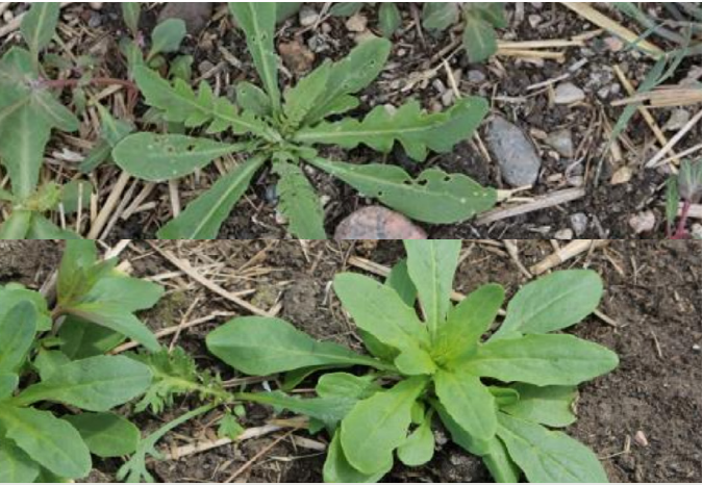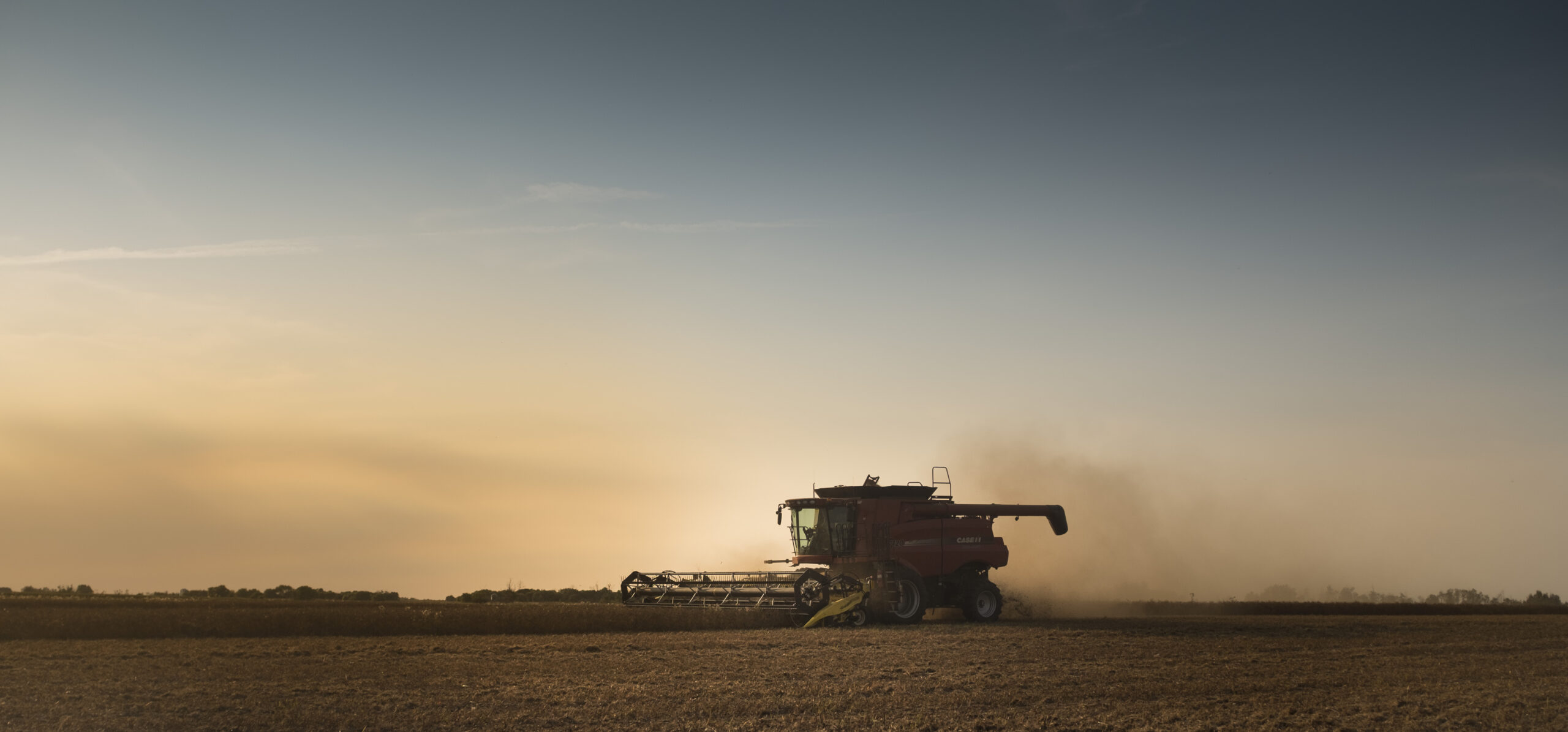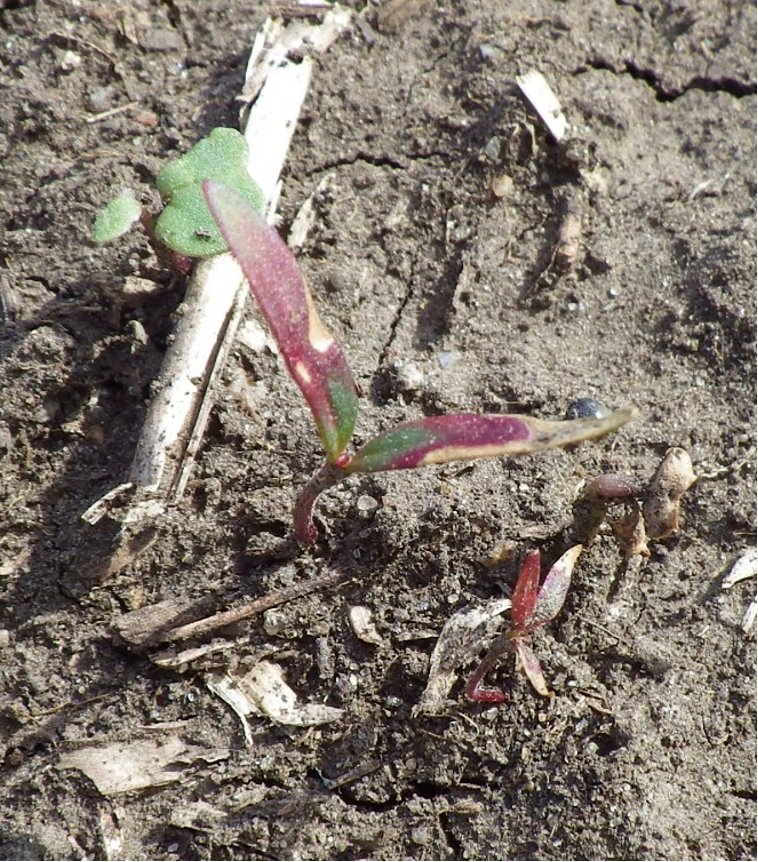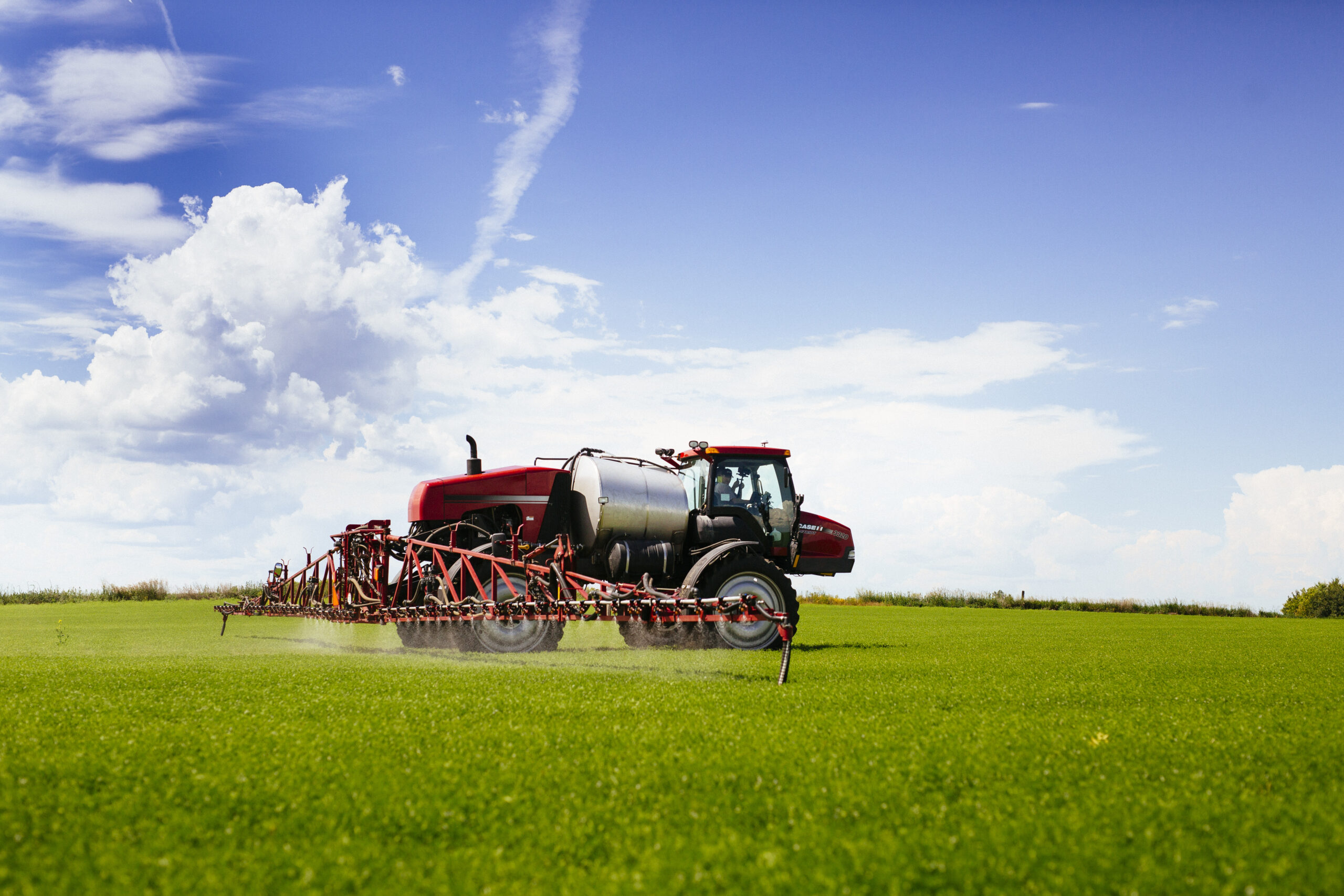By Bruce Barker, PAg, and Donna Fleury, PAg
Following harvest, a window opens for post-harvest weed control for many pulse and soybean growers in Western Canada. An open fall allows winter annuals to germinate and perennial weeds to resume growth. Controlling these weeds in the fall provides a foundation for a clean pulse crop in the spring.
Annual and Winter Annual Weed Control
Winter annual weeds germinate in the fall, survive through the winter, and then resume growth early in the spring. This gives winter annuals a big advantage over spring germinating crops because, if not controlled, they are often finished flowering and are beginning to mature as crops are emerging. Winter annuals can often become too large to control easily in the spring with a pre-seed burndown. Winter annuals are strong competitors for moisture, nutrients, and other resources and if not controlled, they have the potential to cause serious yield losses in spring crops.
Common winter annual weeds include members of the mustard family such as stinkweed, flixweed, and shepherd’s purse. Yellow whitlow grass and pygmy weed are two other winter annual weeds that complete their life cycle very early in the spring, before most crops are seeded. The presence of yellow whitlow-grass and pygmyweed can cause concern when found, but only very heavy populations present before seeding would result in reduced yield potential. Other important weeds include narrow-leaved hawk’s-beard, Japanese brome, and downy brome. In Western Canada, Japanese brome is adapting to be more of a spring annual, but downy brome remains a winter annual weed.

Bottom: Stinkweed
Winter annual weeds should not be confused with biennial weeds (i.e. nodding thistle, burdock) that have a two-year life cycle and remain as a rosette in year one and will only flower and mature in year two.
“Another group of weeds that are becoming problematic particularly for pulse growers are ‘tender’ winter annuals, such as cleavers, chickweed, field violet, and storksbill,” explains Clark Brenzil, Provincial Specialist Weed Control, Crops and Irrigation Branch, Saskatchewan Ministry of Agriculture. “These tender winter annuals tend to not successfully overwinter when temperatures are very cold or if they get too large before winter, however under direct seeding conditions these weeds are often able to successfully overwinter as a winter annual. These are difficult weeds to control and it is really important to control them prior to seeding a pulse crop because there are few in-crop control options outside of Group 2 herbicides. Also, several of these species are expressing resistance to Group 2 herbicides over a wide area including cleavers and chickweed, stinkweed and narrow-leaved hawk’s-beard.”
Post-harvest weed control for winter annuals provides growers an opportunity to clean up fields with a different herbicide mode of action to help reduce the selection pressure on the Group 2 herbicides commonly used in pulse crops. Groups 4, 14, and 4+19 herbicides are registered in the fall, and are often tank-mixed with glyphosate (Group 9) to provide effective control. “Growers should consider using herbicide mixes as a strategy for reducing the risk of herbicide resistance and minimizing the progression of resistance when isolated plants are found in a field,” adds Brenzil. “Without careful management, once a Group of herbicides is lost for controlling a particular weed, there are not a lot of other options available. There are also other positions in the crop rotation where combinations can be used to control some of these more challenging weeds. Always carefully check herbicide labels for registered crops, label rates and any cropping restrictions.”
Winter annual weeds germinate in late summer or early fall when temperatures begin to cool, and usually continue until freeze-up or into the early winter under the snow falling on unfrozen ground. As a result, the timing of a fall phenoxy herbicide (2,4-D and MCPA) application for winter annual weed control is much later than herbicides applied for perennial weed control. “The application of a phenoxy herbicide late in the fall mimics the plant’s own hormones and provides a signal to the plant to continue to grow when it should be entering dormancy for the winter, thereby reducing its cold tolerance and forcing it to expend energy resources that it will need for winter survival,” says Brenzil.
Caution must be used in herbicide selection and time of herbicide application, as some herbicides will not breakdown as rapidly in the soil and cause germination damage the following spring. For example, a low rate of 2,4-D (280 grams active ingredient per hectare or four ounces active per acre) is safe for most pulse crops and soybeans, but higher rates may cause crop injury the following spring, especially if applied just prior to freeze-up. Similar precautions must be observed with other Group 4 herbicides registered for post-harvest application.
“Some weeds such as narrow-leaved hawk’s-beard require a higher rate of 340 grams of acid equivalent per acre for control, so at the low fall rate recommended prior to pulses, the result is only injury to narrow-leaved hawk’s-beard plants,” says Brenzil. “Research at the University of Saskatchewan showed that the following spring, a glyphosate application was not effective on these injured weeds. As a result, one of the better ways to manage weeds like narrow-leaved hawk’s-beard that are less susceptible to phenoxys or outside of the mustard family, is a very early spring application of glyphosate. This timing also syncs nicely with dandelion control, if the fall opportunity was missed.”
Although most herbicide for winter annual control with any amount of soil residual activity is not tolerated by pulses in the spring, there are still several herbicides that may be applied in fall or spring, prior to the seeding of pulses. Refer to Guide to Crop Protection for more information.
Because winter annuals are typically controlled with post-harvest herbicides from early October until freeze up, it should be noted that some herbicides such as glyphosate or Group 2 herbicides have reduced efficacy when weather gets colder. Phenoxy herbicides such as 2,-D are not negatively affected by cold weather. With phenoxy products, a medium to coarse droplet size for spraying is recommended for targeting the smaller plants and minimizing product volatilization.
Make sure that current weed leaf staging and size is controlled with the herbicide labeled rates. Winter annuals quickly outgrow recommended herbicide stages, so scout fields to ensure optimum timing. Apply herbicides when the majority of winter annuals have emerged and are at the right stage for control.
Perennial Weed Control
Few options exist for in-crop perennial weed control in pulses, making a lead-up treatment of these weeds in the fall critical to maximizing yield. A fall application with glyphosate can be effective for perennial weed control, including Canada thistle, dandelion, foxtail barley, and quackgrass. In the fall, these perennials are moving nutrients downward to the root to build up new root material and energy reserves, to start growing the next spring. Glyphosate is translocated down into the root, increasing the amount of active ingredient that reaches the plant’s growing point.
The best approach for control of Canada thistle and quackgrass, particularly for later maturing crops, is with a pre-harvest application. This timing has been shown to be more consistent and up to twice as effective as a post-harvest application. After harvest, adequate regrowth is required for glyphosate to be effective, usually four to six weeks. Plants should have a minimum of three to four new green leaves and quackgrass should be a minimum of eight inches tall. Apply glyphosate and other systemic herbicides during the heat of day when perennial weeds are actively growing and putting energy into their roots. Application timing from mid-September to early October usually provides the best post-harvest results, but applications can be made at any time while temperatures are warm and leaf tissues have not been damaged by frost. In some situations, treated perennials may not appear to succumb to the glyphosate treatment in the fall, but control the following year will be effective.
For dandelion, which grows under the crop canopy and may be missed with a pre-harvest herbicide, post-harvest is an ideal time for weed control. Dandelions are more actively growing in cool, fall environmental conditions. Research has shown that the ideal time for dandelion control is September 15 to 30. Choose the correct herbicide rate for the size of the dandelion rosette, and use higher rates for larger plants. Dandelions covered by straw may not be controlled as the straw can interfere with herbicides contacting the dandelion leaves.
Spraying After A Frost
Winter annuals can tolerate light frosts but perennials harden off after several nights of low temperature in the fall. In general, dandelions are the most frost tolerant, followed by winter annuals, quackgrass, foxtail barley, and Canada thistle.
Application recommendations for glyphosate include:
- Light frost (0 to -4°C): Should not negatively affect perennial or winter annual weed control. Spray if the daytime forecast is a minimum of 8°C for at least two to four hours after the application, and there is no risk of overnight frost
- Heavy frost (-5°C or colder): Wait one to two days to assess injury severity, and treat only if the majority of target weeds are more than 60 per cent green and show signs of active growth (leaves are still bright green and supple to the touch). Spray if the daytime forecast is a minimum of 8°C for at least two to four hours after the application, and there is no risk of overnight frost
- When possible, spray late in the morning or early afternoon when it is warm and plants are most actively growing. Ideally, spray on sunny days. With cool temperatures, stop spraying two hours before sunset
Encouraging Fall Volunteer Canola
Research by Rob Gulden at the University of Manitoba looked at how fall tillage could encourage volunteer canola to germinate in the fall and terminate naturally with frost. Soil disturbance used either a spring-tooth tine harrow (one centimetre depth) or tandem disc (12 centimetre depth) with two passes in opposite directions.
Gulden found that timely tillage shortly after canola harvest increases volunteer canola seedling germination in the fall and thereby decreasing volunteer canola in the seedbank. Timing of tillage was more important than tillage type, and even a low disturbance tillage pass (tine harrow) was effective at encouraging early fall and spring emergence of volunteer canola. Early fall soil disturbance, shortly after canola harvest, was the most effective timing to maximize volunteer canola fall germination. Winterkill of seedlings following germination reduced overall seedbank populations of volunteer canola.


